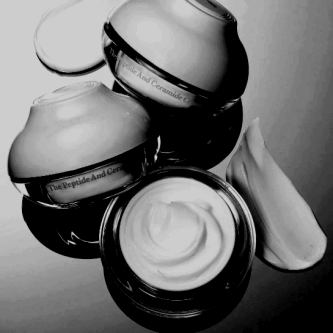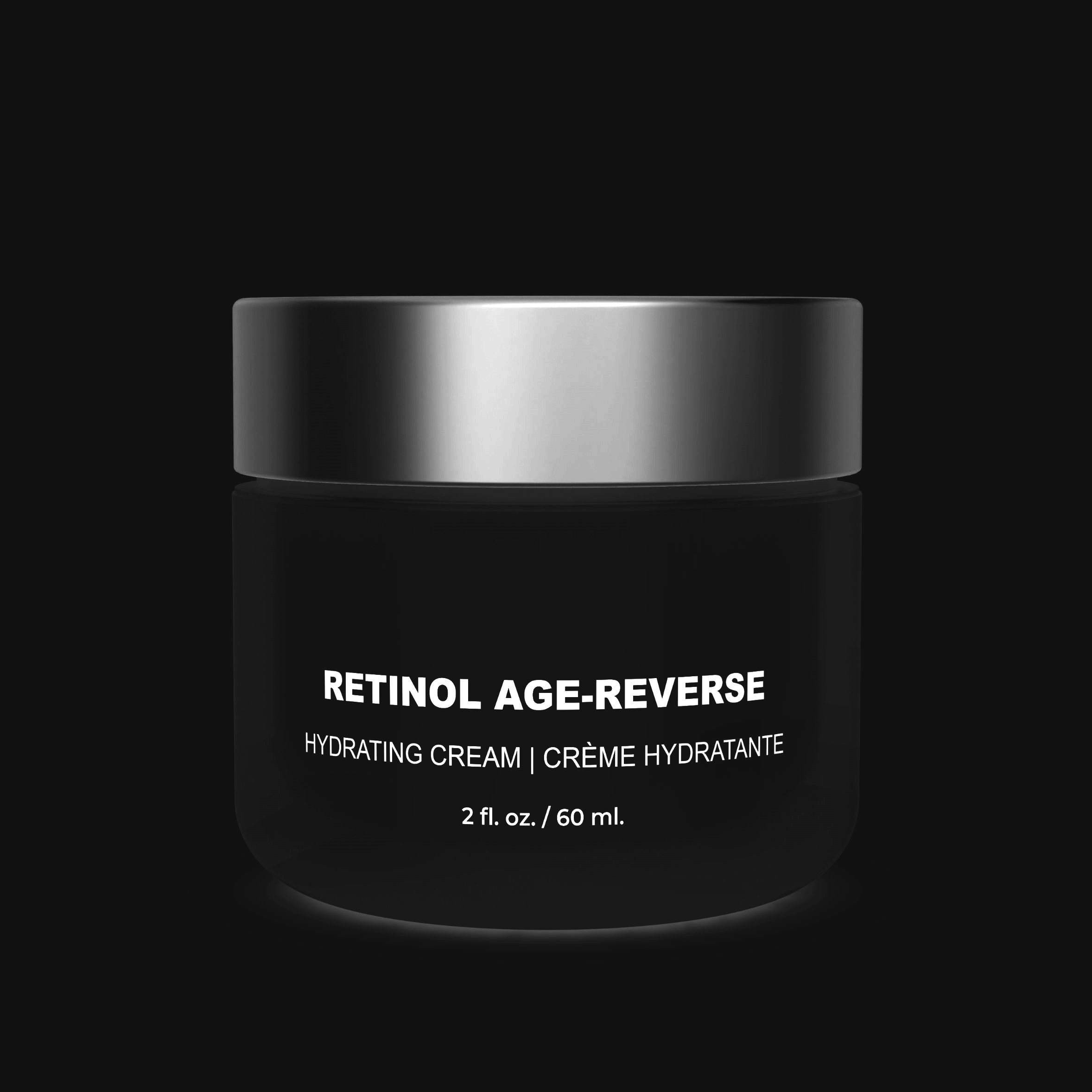Ceramides for Skin : What are Ceramides?
Ceramides are lipids or fats that exist naturally in high amounts in the top layers of skin. They account for more 50% of the skin’s composition and serve a critical function in protecting the skin from environmental elements such as pollution. Ceramides efficiently link skin cells together, forming a barrier under the skin’s surface: a protective layer that plumps the skin and locks in moisture.
Ceramides are lipids (fats) present naturally in the outermost layer of skin, often known as the skin barrier. A typical metaphor used to explain the function of ceramides compares the skin barrier to a brick wall. “If skin cells are ‘bricks,’ ceramides (together with cholesterol and fatty acids) are the’mortar’ that keeps them together to produce a protective barrier.
Ceramides help seal in good things (like moisture) while keeping out bad things like germs, irritants, and pollutants. When your skin barrier is working effectively, you are less likely to have skin issues such as dryness, redness, and excess oil, which can be caused by environmental or inherited factors.
What are the Benefits of Ceramides?
- Enhance the condition of your skin’s cells
- Create a barrier to keep your skin from losing moisture
- Prevent skin dryness and irritation by holding in moisture
- Guard your skin against environmental harm
- Protect your skin from allergens and pathogens such as bacteria and fungus
- Promote anti-aging by maintaining moist, supple skin
Maintains the skin barrier
Ceramides in the skin can be reduced by aging and using harsh soaps or exfoliants. When ceramide levels fall, the outer layer of the skin, may crack and become dry. This breakdown of the epidermal barrier can result in infection and inflammation. Replacing lost ceramides helps to keep the skin barrier healthy.
Boosts Hydration
Ceramides improve hydration by retaining moisture. Skin that is dehydrated can break and become rough. When the skin’s barrier is compromised, transepidermal epidermal water loss occurs. Water that evaporates from the epidermis, a skin layer, is referred to as water loss. Epidermal water loss has the potential to dry and inflame the skin, raising the risk of inflammatory illnesses such as psoriasis, acne, and eczema.
Protects against UV Damage
Sunlight and UV rays are responsible for 90% of visible skin changes such as wrinkles and pigmentation. Photoaging is the result of cumulative sun damage. According to a 2021 study, ceramide-containing moisturizers and sunscreens protect the skin from UV damage. The products enhanced skin hydration, kept cell turnover normal, and decreased redness and hyperpigmentation.
Softens and smoothes the Skin
Dryness, flakiness, and fine lines from dehydration are common symptoms of a weakened skin barrier. Restoring lost lipids may enhance skin moisture and overall appearance and feel.
Ceramides decrease with Age
Like collagen, the amount of ceramides in your skin naturally drops over time as you get older. As you age, certain processes in your body naturally slow down. Ceramide production is one of these processes (along with collagen and elastin production). After age 30, ceramide levels decline by about 40 percent and after age 40, that decline is over 60 percent.” So, after you pass 30, adding ceramides into your skin-care routine can help boost elasticity and the overall appearance of skin while helping to reinforce your skin’s moisture barrier so new problems don’t arise.
Types of Ceramides
Ceramides are also categorized numerically. According to Dr. Lortscher, “there are at least a dozen varieties of ceramides, and researchers have begun to find many more ceramide molecules and classes” that exist naturally in the human body. On ingredient lists, the most prevalent varieties of ceramides found in skin-care products are ceramides 1, 2, 3, and 6-II, also known as ceramide EOP, ceramide NS, ceramide NG or NP, and ceramide AP, respectively. And while all of them are known to seal in moisture and reinforce the skin’s barrier, each of these regularly utilized ceramides stands out for a particular reason.
Ceramide 1: Ceramide 1 has a unique structure and a few distinct capabilities, including gluing skin cells together and storing linoleic acid (an acid that plays a key function in skin barrier restoration). This is why ceramide 1 is known as the most essential ceramide. When combined with ceramides 2 and 3, it gives even greater moisturizing benefits.
Ceramide 2: Captures water and attaches it to the epidermis [the outermost layer of skin], which maintains healthy hydrated skin.
Ceramide 3: Ceramide 3 has a synergistic impact with ceramide 1 and serves to reinforce and enhance the skin barrier.
Ceramide 6-II: Along with the above three, research shows that this form of ceramide helps prevent water loss when used in skin-care products. According to a study published in the Journal of Investigative Dermatology, its structure allows it to help repair a depleted skin barrier to resemble a healthy skin barrier.
Ceramides FAQ
Ceramides are lipids (fats) that exist naturally in the skin. They account for more than half of the skin’s makeup, so it’s no surprise that they play such a crucial function in preserving your skin from environmental hazards and making it seem younger.
How do ceramides benefit the skin?
Ceramides have been shown to have anti-aging benefits. Skin cells are the bricks, and ceramides are the mortar, if you compare them to bricks and mortar. Ceramides bind skin together and form a protective barrier, which aids in the prevention of moisture loss and visible damage from external stresses. Ceramides also contribute to the suppleness of your skin.
Aside from ceramides, two more intriguing components are phytosphingosine and sphingolipiden. These are ceramide precursors that assist the higher layers of skin manufacture more ceramide, allowing the skin to better defend itself.
If ceramides are naturally present in skin, why do I need them in my skincare?
Ceramides are abundant in young skin. However, the quality and amount of ceramides decrease with age and sun exposure. This can disrupt the skin barrier, resulting in dry, rough skin, wrinkles, redness, inflammation, and dehydration.
Ceramides in skincare can replace your skin’s ceramides. This helps your skin appear and behave younger by keeping it moisturized, firm, and supple.
What outcomes may I anticipate from a ceramide-enriched product?
Ceramide-containing skincare products that are properly made (and properly packed) assist to build your skin’s barrier and increase moisture. As a consequence, the skin is smoother and firmer, with fewer fine lines and wrinkles and less discomfort.
The most effective anti-aging chemicals are not always stable. This implies that their efficiency decreases when exposed to light and air, much as when you open a jar. As a result, it is preferable to utilize opaque tubes, bottles, or sealed pumps. These will assist ingredients in performing at their peak.
How do I determine whether a product includes ceramides?
The word ‘ceramide’ is usually included in the ingredient list (ceramide AP, EOP, NG, NP, or NS), but not always. Ingredients such as phytosphingosine and sphingosine are not immediately identifiable as ceramides, but are ceramide precursors that encourage the skin’s production of ceramides. Ceramides, on the other hand, are such a prominent anti-aging substance that most companies will plainly state when they are included.
Is it better to use synthetic or natural ceramides?
Ceramides are a powerful anti-aging substance due to two properties: they moisturise your skin and teach it to restore itself to a healthy condition.
Plants can be used to produce ceramides. The disadvantage of plant-based ceramides is that they can only moisturize skin and cannot train it to behave younger and healthier. Ceramides may be generated from both animal and human skin, and these ceramides have both qualities. We are not comfortable employing these sorts of ceramides as an ethical skincare firm.
Synthetic ceramides are a cost-effective and ethical answer. They are steady, moisturize the skin, and educate it to appear youthful and healthy. Although they had a terrible reputation for not being adequately absorbed by the skin in the past, modern versions do not have this issue.
Ceramides are beneficial to certain skin types?
Ceramides are referred to be “skin-identical” substances since they exist naturally in the skin. As a result, they are an excellent component for all skin types, including sensitive, acne-prone, and oily skin. Ceramides can also be used safely around the eyes.
With which components do ceramides function well?
Ceramides work best when paired with other’skin-like’ substances including amino acids, glycerine, and cholesterol. These lipid combinations are excellent for enhancing skin tone and texture as well as minimizing the appearance of irritated skin. Because no one anti-aging ingredient can accomplish everything, make sure your ceramide-enriched product also contains antioxidants and skin-restoring compounds like retinol, niacinamide, linoleic acid, and peptides.
Can I use ceramides in conjunction with my AHA or BHA exfoliant?
Ceramides can absolutely be used with your AHA or BHA exfoliant. We actually suggest it! Exfoliants remove a layer of dead skin cells, making it simpler for ceramides to be absorbed by the skin.
Work Cited :
Dumbuya, H. “Efficacy of Ceramide-Containing Formulations on UV-Induced Skin Surface Barrier Alterations”. https://jddonline.com/articles/article-efficacy-of-ceramide-containing-formulations-on-uv-induced-skin-surface-barrier-alterations-S1545961621S0s29X/
Spada F. “Skin hydration is significantly increased by a cream formulated to mimic the skin’s own natural moisturizing systems”. https://www.dovepress.com/skin-hydration-is-significantly-increased-by-a-cream-formulated-to-mim-peer-reviewed-fulltext-article-CCID
Lynde, C W. “Moisturizers and Ceramide-containing Moisturizers May Offer Concomitant Therapy with Benefits”. https://www.ncbi.nlm.nih.gov/pmc/articles/PMC3970828/




